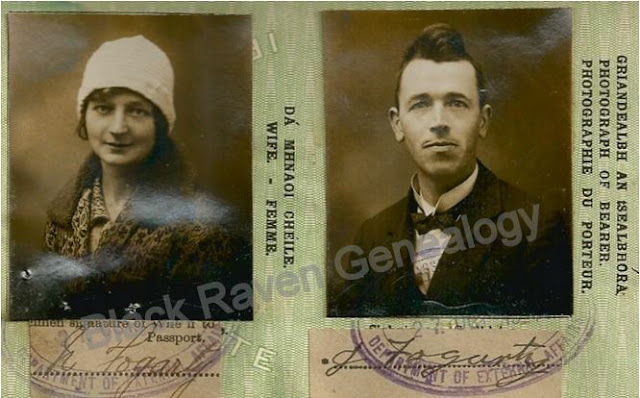With some dismay, this week I solved another long-time genealogy mystery - what happened to my mother's granduncle, Philip Wynne?
Philip was born Philip Augustus Wynne on 26 May 1870. He was the youngest son of John Wynne and Bridget Hynes, then living in Thomas Street, Dublin. His mother registered his birth on 21 June. And, that was the only record of Philip ever found, until now.
We do ‘know’ he survived infancy. His first cousin, Pat Fegan, referred to him as Augustin. Two of his brothers may have named a son after him. John called his eldest John Augustin. And, after he died young, the next boy born was named Philip. James chose the name John Augustin for his son too, though he was also known as Augustin.
My search for Philip, or Augustus, or Augustin, took me all over the world, virtually speaking. There was no sign of him. Whenever a relevant new database came online, his was one of the first names entered, just in case. Then, this week, an entry in the recently published civil registers brought my search to a conclusion.
'Philip Wynne' was not a common name in Ireland. The marriage and death index for the entire country included only fourteen possibilities, each record seemingly less likely than the last. But it now cost nothing to check them out. One record related to a Philip Wynne, who died in Balrothery (a district covering north county Dublin) in 1931. He was said to have been sixty-five years old. Our Philip was only sixty at that time, and his family had no connection with north county Dublin. Nonetheless, it turned out to be my missing great-granduncle.
And what a shocking discovery it was!
Philip died in the Portrane Mental Hospital, Donabate, known and perhaps often feared locally as merely 'Portrane'. Poor Philip!
A hundred questions immediately flashed through my mind. Was he mad? What was wrong with him? How long was he there? Why did his family not take care of him? Did they lock him up - throw away the key, so to speak - and never see him again? Why did Pat Fegan not mention his fate? Was it all kept hush-hush and brushed under the carpet?
 |
| Death of Philip Wynne, Balrothery, 1931 (click on image to enlarge) |
Philip’s death certificate revealed nothing new, other than his cause of death – cardiac failure having suffered myocardial degeneration for years. It did show his former residential address - 4 Christ Church Place - which instantly confirmed this was our man.
Philip’s sister Mary lived at 4 Christ Church Place when she married Michael Finegan in 1885. The family still lived there when Philip’s mother died ten years later. Thus, the address indicates the timeframe Philip entered the hospital. And, as they only had this old address, it suggests the family, although fond of him, did not keep in touch.
Philip’s stay in 'Portrane' spanned at least thirty years, probably much longer. How sad is that?
Of course, once I knew where to look, I easily found him in the 1901 and 1911 census of Ireland. The hospital completed a form called the Return of Lunatics and Idiots in Public Institutions and Private Lunatic Asylums. Like prisoners and police officers, etc., patients were recorded using only their initials, which was why Philip had been so hard to trace in the first place.
The 1901 census showed Philip was thirty years old and born in the city of Dublin, which is correct. He was single and able to read and write. He’d even worked as a brush-maker, just like most of his elder brothers. Sadly, Philip suffered from his illness for a long time, from when he was a boy aged only about sixteen years.
He had a condition called ‘Melancholia’, presumably some form of depression. You won’t believe what they said caused it. The cause, according to the hospital, was put simply as ‘Masturbation’.
Really?!
In the 1901 census the handwriting was unclear, but in 1911 there is no doubt but that this was the cause. Dr Google confirmed Philip was not alone - other people suffered this same illness for the same reason. Now that is madness!
I wonder if I can access his medical records. Maybe, I'll give 'Portrane' a call.
Source: Deaths, 1931, Philip Wynne, Balrothery, Civil Records, Irishgenealogy.ie; P.W., Portraine Demesne, Donabate, Dublin, 1901 and 1911 Census, National Archives of Ireland.
………………
© Black Raven Genealogy


